1.10.2021
Catch one of the most active small bodies in the solar system during a rare superoutburst.
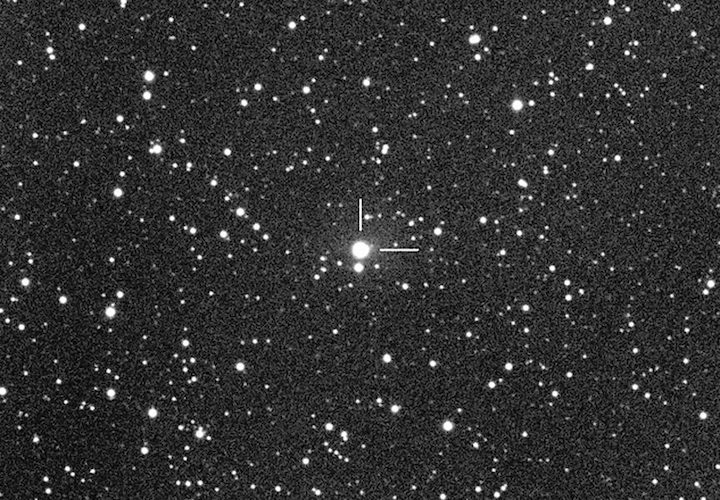
Martin Mobberley captured this image of the bright outburst of Comet 29P/Schwassmann-Wachmann around 9:50 UT on September 29th.
Martin Mobberley
A comet infamous for its explosive personality has been in near-continuous outburst since September 25th. The brightness of Comet 29P/Schwassmann-Wachmann is steadily rising, and it now appears as a tiny, 11th-magnitude object easily visible in 8-inch and larger telescopes. If you've never seen a comet masquerade as a star-like planetary nebula, don't pass up the chance — look soon. As the outburst evolves the comet's coma will expand but also fade.
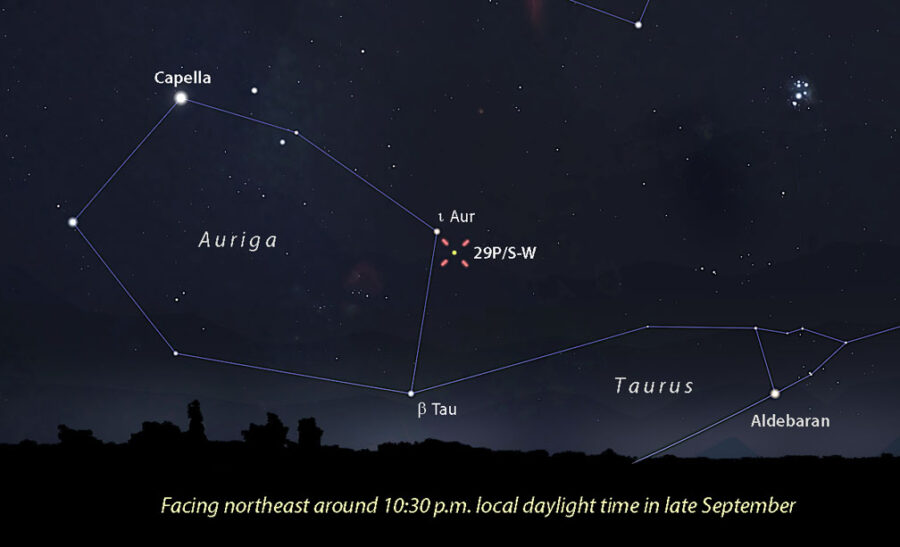
Stellarium
Timing and location couldn't be better, with the comet just 1.3° south-southeast of the easy, naked-eye star Iota (ι) Aurigae and standing at the threshold of a copious viewing window. Best viewing starts around 10:30 p.m. local daylight time and lasts till dawn. I caught 29P on Tuesday night, September 28th at 10:15 p.m. CDT, 45 minutes before the last-quarter Moon rose.
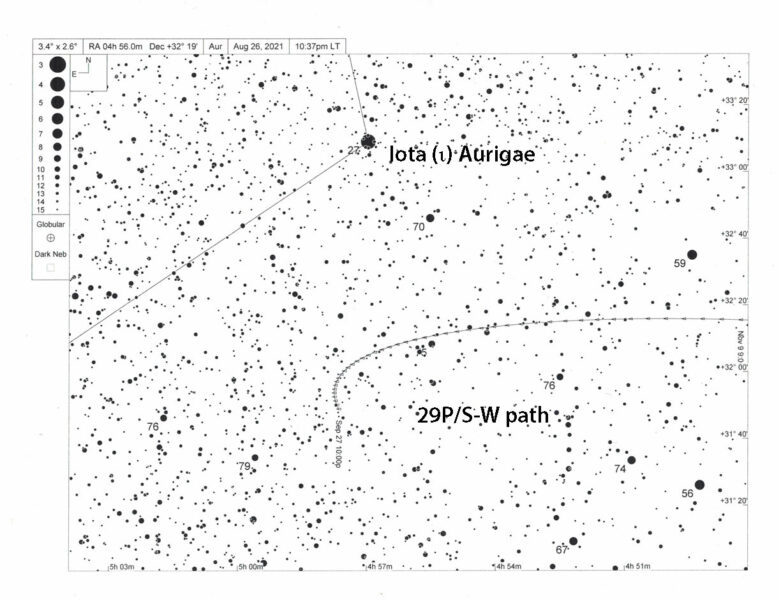
MegaStar, used with permission
Although just 12° altitude, I spotted the suspected comet in my 15-inch Dob even at the lowest magnification of 64×. At a casual glance, it looked exactly like a star, but with averted vision I could see a small, faint coma enrobing the bright false nucleus. Lucky or not, 29P was involved with a 13th-magnitude star some 12″ to its east at the time. When I looked again just before moonrise, it had parted company.
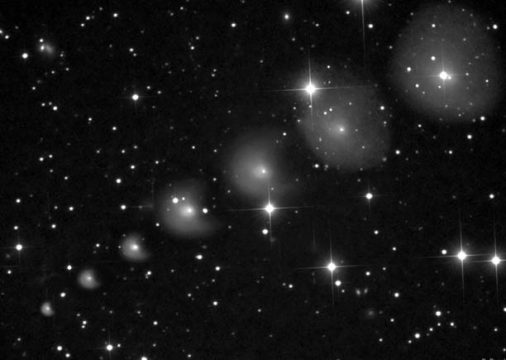
Damian Peach
Due to low altitude, I couldn't make out more detail, just a super-compact, bright coma with a degree of condensation (DC) of 8 on a scale of 0 to 9, from least to most concentrated. I'm as eager as you are to get the scope out again for another look. The comet may continue to flare and brighten or begin its inevitable dimming. To see night-to-night changes in a celestial object is one of the reasons comets are so fun to observe.
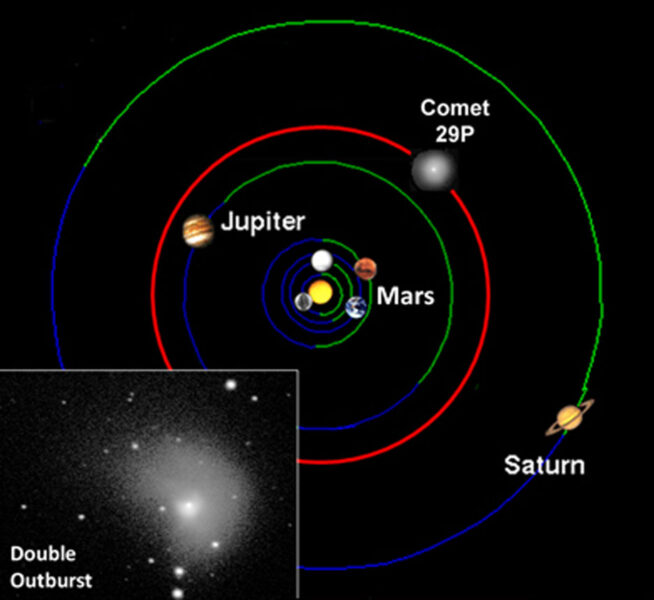
Courtesy of Richard Miles
Many comets have outbursts, but 29P is unique because it averages 7.3 outbursts a year! Typically, two or three per apparition are visible in amateur telescopes. Normally a 16th-magnitude object, a blow-up can vault this comet from obscurity to as bright as 10th magnitude. It orbits a fair bit beyond Jupiter with a period of 14.7 years, and as comets go, it's enormous with a diameter of 60.4 ± 7.4 kilometers. Frankly, to see any comet at such an incredible distance is not only amazing but an indication of just how powerful the current outburst must be.
Richard Miles, with the British Astronomical Association (BAA), is the project lead on the MISSION 29P, a clearinghouse devoted to news and observations of the comet with the hope of better understanding the underlying cause of its tumultuous outbursts. Miles suspects that the object may have undergone four successive outbursts, with "each subsequent event triggering the next" during the current flare-up. Another good resource for current comet happenings is the Comets Mailing List.
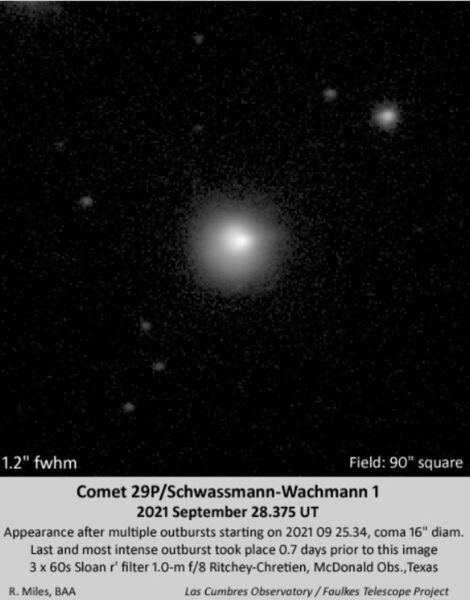
Richard Miles
Water ice, an important volatile that drives activity in many comets, is virtually inert at 29P's distance. Instead, vaporizing carbon monoxide ice appears to be the key driver of its regular outbursts. Based on data obtained largely by amateur astronomers, Miles describes the outburstsas cryovolcanoes that erupt explosively after carbon monoxide and methane, under pressure beneath the comet's crust melt, mix and release energy. Solar heating causes the crust above these spots to give way, explosively releasing gases along with up to a million tons of dust and debris at a shot. Think of popping the cork on a bottle of champagne. Because 29P is a large comet, its gravity temporarily reseals the "wound" until another cycle begins.
As described in the September 2021 issue of Sky & Telescope magazine, there's currently a campaign to observe this comet. You're encouraged to share your observations at the 29P/ S-W 1 Observations page.
Wishing you clear skies so you can witness 29P's delightful and instructive volatility!
Quelle: Sky&Telescope
